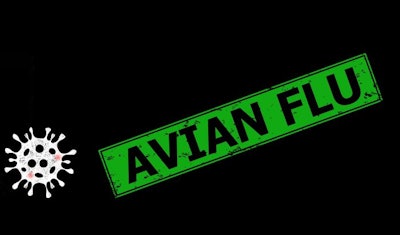
In Japan, there has been a late-season spike in cases of highly pathogenic avian influenza (HPAI) in poultry flocks, including first cases on the island of Hokkaido. Despite one new outbreak, South Korea has succeeded in re-building its laying hen population following very heavy losses from the disease last winter.
Over the past two weeks, four new HPAI outbreaks have occurred on Japan’s commercial farms.
According to the agriculture ministry, these included two premises on Hokkaido. On April 16, birds tested positive for the H5N1 HPAI virus in a layer flock of around 520,000 where elevated mortality was observed in the Shiraoi district. Also found to have infected birds was a farm with similar symptoms among 500 ostriches and emus, as well as 100 layers in Abashiri city. These premises were in two different districts of this most northeasterly of Japan’s main islands.
Previously, the veterinary authority had officially registered an outbreak in a commercial flock. This affected around 170,000 meat chickens, according to the report to the World Organisation for Animal Health (OIE). Located in the Tohoku region in northern Honshu, the farm was located in Yokohama town in Aomori prefecture.
The latest outbreak reported by the ministry was in the same region. After a spike in mortality, a flock of 400 laying hens tested positive for the same virus in Abashiri city in Akita prefecture.
Since the first cases of HPAI at the start of the winter, HPAI has hit 22 farms in Japan. Directly impacted have been more than 1.73 million commercial birds. While birds tested positive for the H5N8 virus in two of the early outbreaks, the H5N1 serotype has been detected at all subsequent locations.
Japan reports infections in unusual host species
As well as the recent outbreaks involving poultry, the authorities in Japan have notified the OIE about H5N1 detection in two other species.
Since the end of March, one raccoon dog and one red fox have tested positive for this virus. Both were found in the same area — Sapporo city on Hokkaido — where infected crows were previously found dead.
South Korea poultry farm hit by HPAI
Over the past two weeks, South Korea’s veterinary agency has confirmed with the OIE a further HPAI outbreak linked to the same virus variant. Affected was a farm in South Gyeongsang province with around 135,000 laying hens.
This brings the country’s total outbreaks on poultry farms since the start of the 2021-2022 winter to 47, reports the agriculture ministry. Number of poultry directly impacted by these outbreaks is approaching 5 million, based on OIE notifications.
Compared to the 30 million hens culled in the HPAI outbreak wave during the 2020-2021 winter season, this year’s losses in South Korea are low. Outbreaks have been less severe and less widespread, reports Yonhap news agency. This relatively favorable situation has allowed the nation’s layer flock to increase more than 13% year-on-year to 70.43 million birds.
Further cases reported in eastern India
At the end of March, a backyard flock in the Supaul division of Bihar state tested positive for the H5N1 HPAI virus. There were 20 cases among a flock of 262 poultry, according to the OIE notification.
Two weeks later, Times of India reported that more than 200 chickens and ducks were culled in the same village due to HPAI cases. As well as carrying out the culling, authorities supervised the burying of culled birds and the disinfection of the surrounding area.
Located in the northern part of the state, Supaul borders Nepal, where a number of outbreaks have occurred so far this year.
Previously, the only recently reported HPAI outbreak in Bihar was at a poultry research center in January.
Another outbreak in Taiwan poultry flock
In Taiwan, the number of HPAI outbreaks confirmed with a link to the H5N2 virus serotype has risen to 31.
Latest cases were in among 2,379 turkeys in Chiayi county, according to the OIE notification. They bring to more than 445,000 the number of poultry directly impacted by this virus since November of 2021.
Detected in early April, this was the first outbreak in the territory for around four weeks.
Iran declares two HPAI outbreak series closed
To the OIE, the animal health agency of Iran has declared the HPAI situation closed with respect to the H5N5 virus variant in poultry flocks.
Around 37,000 poultry were directly affected in six outbreaks linked to this serotype between October and December of 2021. Over this period infections were detected in five village flocks and at one farm in four of the country’s northern provinces.
Also regarded as resolved now is an outbreak wave in wild birds in Iran. During November of last year, wild geese and swans tested positive for the H5N8 HPAI virus serotype in a national park and wildlife refuge.
China reports two new human cases of influenza of avian origin
In the Western Pacific region, two new human cases of avian influenza A(H5N6) are confirmed. This is according to the regional office of the World Health Organization. Latest cases bring to 77 the number of lab-confirmed infections with this virus since 2014. All were from mainland China, and 32 of the patients have died.
The latest cases were a 53-year-old woman from Zhenjiang city in Jiangsu province, and a man aged 56 from Sichuan province’s Deyang city.
At the time of reporting, both cases were in hospital, and the male patient’s condition was described as severe. Both had been exposed to poultry either at a live bird market or dead backyard chickens.
View our continuing coverage of the global avian influenza situation.

















